Научное определение термина "Биоэнергетика"
Биоэнергетика (биологическая энергетика), совокупность процессов преобразования энергии внешних ресурсов в биологически полезную работу живых систем, а также раздел биологии, изучающий эти процессы.
04.03.2016
Отзывы о Токсидонт-Мае
Оригинал - https://www.youtube.com/watch?v=JbYgeYWbNwI
Купить Токсидонт-Май - http://alex-argo.ru/catalog/toksidont-mai-kupit.html
 29.09.2012
Glycolysis.m4v
29.09.2012
Glycolysis.m4v
Take a look at the ten enzymes that make possible the ten steps in the breakdown of sugar the process is called glycolysis.
 29.09.2012
The Electron Transport Chain
29.09.2012
The Electron Transport Chain
The Electron Transport Chain in really easy to see steps.
We did this process for a project in one of our biology classes at the University of Washington. I hope you enjoy and that it is very easy to understand.
 29.09.2012
Photosynthetic Electron Transport and ATP Synthesis
29.09.2012
Photosynthetic Electron Transport and ATP Synthesis
This animation from Mcgrahill tells you how ATP are synthesised during etc....
 29.09.2012
Calvin Cycle
29.09.2012
Calvin Cycle
Captions done by: http://www.youtube.com/user/lizzashley89
 29.09.2012
Процесс старения за 40 секунд
29.09.2012
Процесс старения за 40 секунд
Процесс старения за 40 секунд
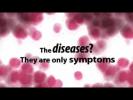 29.09.2012
Why aging must be stopped. Остановим старение.
29.09.2012
Why aging must be stopped. Остановим старение.
Aging is not just "imposition of the human race", it is a reason of serious economic issues. We have to stop aging, find the cure for it, or else serious catastrofic events will happen in the nearest future.
Старение - это не только унижение человеческого достоинсва. Существуют серьезные экономические причины остановить старение населения.
 29.09.2012
Долголетие без старение. Пептидны комплексы Eni-Sala
29.09.2012
Долголетие без старение. Пептидны комплексы Eni-Sala
Этот фильм о факторах, влияющих на здоровье современного человека и способе решения вопроса здорового долголетия при помощи пептидных комплексов Eni-Sala, отличительной способностью которых является РЕГЕНЕРИРУЮЩИЙ ПОТЕНЦИАЛ.
 29.09.2012
Лекарство против старения
29.09.2012
Лекарство против старения
Профессор Владимир Скулачев утверждает, что обнаружил антиоксидант, который останавливает постепенное - обусловленное старением - ухудшение здоровья людей.
Еще два года экспериментов и, по мнению профессора, он сможет взломать секрет старения.
 29.09.2012
Остановить старение
29.09.2012
Остановить старение
 29.09.2012
варфариновый некроз
29.09.2012
варфариновый некроз
 29.09.2012
APOPTOSIS
29.09.2012
APOPTOSIS
Aqu? les presento un video de la apoptosis "o muerte celular programada" por v?a extr?nseca.
 29.09.2012
Апоптоз - Apoptosis
29.09.2012
Апоптоз - Apoptosis
Процесс саморазрушения клетки. Анимация была опубликована в журнале Наука ( Science ) (Molecular Animation of Cell Death Mediated by the Fas Pathway, Sci. STKE 2007 (380).
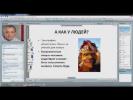 29.09.2012
sisel.co.ua Вебинар "Resveratrol. Исследования"
29.09.2012
sisel.co.ua Вебинар "Resveratrol. Исследования"
http://sisel.co.ua ведет вебинар Александр Мартынов (Латвия)
До 1972 года старением считалось накопленный объем поломок в организме. В 1972 году ученые открыли апоптоз -- запрограммированную смерть клетки. После этого считалось, что геном заставляет гибнуть клетки во благо организма, в котором он живет.
В 2002 году был открыт феноптоз -- запрограммированная смерть групп клеток (организма) и это изменило общее представление о старости. Геном убивает организм-хозяина, т.е. сам себя! Это происходит в целях общего эволюционного процесса, другими словами, ради более высшей цели, вид избавляется от индивидов.
Старость -- это постепенное и согласованное ослабление функций организма под управлением генома. Другими словами это ПРОГРАММА. А раз это программа, то ее можно...
Организм -- всего лишь машина, слепо выполняющая приказы генома. Как правило, эти приказы учитывают интересы организма, без которого геном гибнет. Однако некоторые из генетических программ нацелены прежде всего на ускорение эволюции или экспансию генома в биосфере. Такие программы и являются феноптозом -- котр-продуктивные для организма и продуктивные для эволюции. Именно из-за этих программ гибнут клетки и организм для ускорения эволюции, главной цели естественного отбора.
С другой стороны, человек в отличие от животных, обладает разумом и не заинтересован в своей биологической эволюции. Задача любой эволюции -- это максимально приспособить организм к среде. Современный человек не приспосабливается к среде, а приспосабливает среду под себя. Защиту своего генома он может обеспечить ограничением рождаемости, а не феноптозом (самоубийством).
Продукты SISEL -- это первые продукты, которые помогают человеку выйти из под гнета генома, чтобы стать HOMO SAPIENS LIBERATUS -- ЧЕЛОВЕКОМ РАЗУМНЫМ ОСВОБОЖДЕННЫМ.
ЭТО БУДУЩЕЕ ЧЕЛОВЕКА, HOMO SAPIENS LIBERATUS
По вопросам сотрудничества
с компанией Sisel
и приобретением продукции
обращайтесь
http://sisel.co.ua
http://twitter.com/siselcoua
skype: sanlun69
icq: 302461856
+380(96)403-58-54
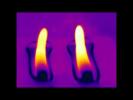 03.09.2012
In the Heat of the Night
03.09.2012
In the Heat of the Night
This video introduces the fascinating world of Hot Plants, flowers that generate heat (thermogenesis) to release scents and attract pollinators. We look at three thermogenic plant species, the monocots Philodendron bipinnatifidium and Colocasia esculenta and the eudicot, Nelumbo nucifera. Some plants such as Philodendron and Sacred lotus are also able to regulate their floral temperature, maintaining their flowers at up to 30 ?C above air temperatures over several days. Our research team is investigating how plants produce this heat and how they can regulate their temperature so precisely. We are also interested in why the plants produce heat. Is it to release particular scents to attract pollinators, to give a heat reward to the insects or does it also help the plants reproductive development?
www.ChloroFilms.org
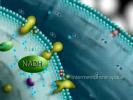 03.09.2012
http://youtu.be/-_8aYKcQZ_Q
03.09.2012
http://youtu.be/-_8aYKcQZ_Q
krebs cycle mitochondria
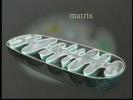 03.09.2012
mitochondria ATP synthesis
03.09.2012
mitochondria ATP synthesis
mitochondria ATP synthesis
 03.09.2012
Anti-aging 3D medical animation mitochondria for Ninapharm,produced by Virtual Point
03.09.2012
Anti-aging 3D medical animation mitochondria for Ninapharm,produced by Virtual Point
3D medical animation clip produced by virtual point of biological process.
The purpose of Ninapharm's researches is to offer an "Anti-Aging Protection" package based on antioxidants. The idea is to determine several diseases directly linked to antioxidants deficiencies and to offer a package which is only based on vegetal or fruit plant extracts and combines different actives that provides the right solution for a Anti-Ageing process.
ADS is dissolved quickly in the stomach and absorbed through the small intestine.
ADS is channeled through the blood to reach the body cells across the cell membrane, crosses the mitochondria double membrane and attacks the free radicals and reduces them.
ADS activates the antioxidant enzyme SOD.
Antioxidant efficacy at cellular level protection and re-generation of the mitochondria through an innovative amphiphilic compound ADS.
3D Video clip produced by Virtual Point Multimedia.
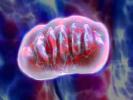 03.09.2012
mitochondria 3D animation
03.09.2012
mitochondria 3D animation
mitochondria, the power plant of the cell
 03.09.2012
THERMOGENESIS
03.09.2012
THERMOGENESIS
HEALTH INFORMATION
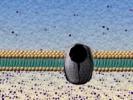 03.09.2012
Active and Passive Transport
03.09.2012
Active and Passive Transport
Biology video about active and passive transport
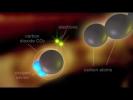 03.09.2012
OXPHOS - Oxidative Phosphorylation
03.09.2012
OXPHOS - Oxidative Phosphorylation
3Dme presents a look at OXPHOS - Oxidative Phosphorylation to help you visualise this complex process.
Through a fascinating process called oxidative phosphorylation, oxygen is used by the mitochondria to absorb electrons & help generate energy. This video uses beautiful, high definition 3D visualisation to take a look inside the human body to follow the path the oxygen molecules take from the in breath, osmosis through the arterial membrane, bound by haemoglobin in red blood cells, to reach the mitochondria. Once inside the mitochondria, the powerhouse of all cells, we demonstrate how oxygen is used to produce energy. This process includes the oxidation of macronutrients, electron carriers such as NADH, the electron transport chain & the cytochrome oxidase complex. Creative imagery has been used in this video to facilitate your understanding of the process of oxidative phosphorylation. We welcome your feedback & suggestions re: future topics you would like to see 3Dme produce for the upcoming App Video Catalogue.
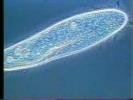 03.09.2012
flagella & cilia
03.09.2012
flagella & cilia
shows d' movement of flagella & cilia in algae
 03.09.2012
Bacterial Flagellum - Evolution's Nightmare & Demise
03.09.2012
Bacterial Flagellum - Evolution's Nightmare & Demise
About the Bacterial Flagellum video and more:
More at http://www.detectingdesign.com
Detailed response to Nick Matzke's proposition on the bacterial flagellum:
http://www.idthink.net/biot/index.html
Another video (unrelated to the flagellum but very impressive):
http://aimediaserver.com/studiodaily/harvard/harvard.swf
-Evolutionist claim that all of life's features (example: the bacterial flagellum) can be explained by the purely material process described in their theory - accidental mutations sorted by natural selection. However, Intelligent Design (ID) theory makes the claim that certain features exist in the universe (including features of life) that are BEST explained by an intelligent cause (ie. a cause with a goal or purpose - ergo originating from a mind). With the scientific hypothesis of intelligent causation, and the objective explanatory filter developed by Dr William Dembski - http://www.uncommondescent.com - ID theory has quickly & firmly established itself as the "official" headache for the most ardent evolutionists today. Those that are informed know what is at stake, and that the explanatory power of the intelligent design theory is effectively guaranteed to supplant a purely materialist theory of evolution in time. This can be seen in how ID has reached a type of critical mass of acceptance - wherewith about a hundred classes are already taught in various universities (including the Ivy league). Classes whcih challenge purely materialistic thinking and more critically analyze the theory of evolution. The growth will continue as more objective & open minded scientists & students eager to explore better explanations continue to pursue better science.
Dr Michael Behe (author of "Darwins Black Box" & proponent of ID) popularized the term *irreducible complexity* to describe features in life which are complex and yet their function can not be reduced without destroying the primary function and usefulness of the system/function to the host organism. In the case seen in the video, the bacteruial flagellum has approximately 40 finely matched protein parts that must all be in place for the bacterial flagellum (w/ motor) to work. Furthermore, the assembly process of this motor is one of the key overlooked aspects of the problem of this systems development - ie. even the assembly program/process is arguably irreducibly complex. So, not only does a bacteria need to have the DNA coded for the correct proteins, the whole cell has to 'know' WHERE to put each protein part and WHEN to put it there. This is an astronomically improbable task to acheive through random fortuitous increases in instruction sequences (which to this day remains purely hypothetical - ie. imaginary) and parts specifications - consider the relative size of the cell surface area to the size of the bacterial flagellum and the chances each molecular part will assemble in the correct location & with the correct timing for assembly. So, the whole machine and the ORDER or sequence of system assembly is critical to success! If the whole universe were a fishbowl like earth's oceans - except fully teeming with bacteria - for 15 billion years, there would still be insufficient probablistic resources to accomplish the feat of builindg up such a comparable system even once. It's no wonder that ID theory is so satisfying to the many open minded scientist it has attracted.
Unfortunately, most evolutionist oppose this theory based strictly on materialistic beliefs. And this is a true detriment to real science. They stubbornly maintain their faith in natural selection - listen to Richard Dawkins - note especially the last words in the following video:
http://www.arn.org/docs/dawkins.mpg
[Excerpt - In exressing why natural selection is believed to find creative designs/solutions to all these kinds of intermediate problems]: "Natural selection is uhmmm..uhhh.. well, I suppose that is a sort of matter of faith on my part." - Richard Dawkins
If never before, you have now found that faith is a absolute neccessity and type of trade-secret of even the most outspoken of evolutionist. So, don't be their fool when they say evolution is a scientific fact. It's almost assured, in my opinion, that future generations will find it hard to believe that people ever accepted the theoy of evolution with the information we have at our disposal. Recent breakthroughs in accelerated protein folding algorithms will, I believe likely, lead to some very uncomforting news for adherents of evolutionary theory - news that could bring that described future closer to our doorsteps - and evolutionists fade into the history books as the mystics of these days... stay tuned. :)
 03.09.2012
Irreducible Complexity? The Bacterial Flagellum
03.09.2012
Irreducible Complexity? The Bacterial Flagellum
A clip from the NOVA production, "Judgment Day."
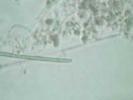 03.09.2012
Bacterial Motility
03.09.2012
Bacterial Motility
http://microbiologybytes.wordpress.com/
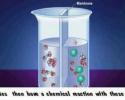 03.09.2012
Osmosis
03.09.2012
Osmosis
How does Osmosis work
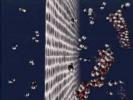 03.09.2012
Osmosis
03.09.2012
Osmosis
Osmosis is the diffusion of water down its concentration gradient. Normally one thinks of water as the solvent, and focuses on the concentration of the solutes, but water itself has a concentration in any solution.
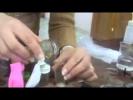 03.09.2012
anaerobic respiration experiments
03.09.2012
anaerobic respiration experiments
 03.09.2012
Necrosis pancre?tica infectada: necrosectom?a por laparoscopia
03.09.2012
Necrosis pancre?tica infectada: necrosectom?a por laparoscopia
Este intervenci?n realizada por el Dr. Poves (Barcelona, Spain) fue presentada en el Congreso Nacional de la Asociaci?n Espa?ola de Cirujanos celebrado en Madrid en 2008. En el se muestra como se realiza por laparoscopia un desbridamiento de necrosis pancre?tica infectada localizada en la cabeza del p?ncreas. La necrosis pancre?tica es una complicaci?n de la pancreatitis aguda y uno de sus riesgos es que puede infectarse. Si esto sucede debe realizarse una evacuaci?n del tejido infectado y del pus (absceso). M?s informaci?n www.ipoves.com.
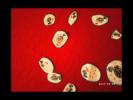 03.09.2012
Necrosis
03.09.2012
Necrosis
In this chilling sequel to "APOPTOSIS," Michael Paquet (writer, director, producer) reveals to the viewer the TRUE MEANING OF HORROR. Prepare to be chilled to the bone, in this stunning next chapter, "NECROSIS: A Cellular Horror."
You will be inoculated with FEAR!
Necrosis (def): the death of a cell on account of another cell.
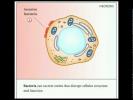 03.09.2012
Necrosis VS apoptosis - www.bahriandoctors.com -
03.09.2012
Necrosis VS apoptosis - www.bahriandoctors.com -
Mechanisms of cell death:
Necrosis VS apoptosis
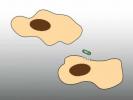 03.09.2012
Apoptosis
03.09.2012
Apoptosis
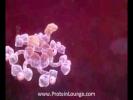 03.09.2012
Apoptosis
03.09.2012
Apoptosis
Protein Lounge animations @ http://www.proteinlounge.com/Animation/Animation.aspx
Apoptosis is a cell suicide mechanism that enables metazoans to control cell number in tissues and to eliminate individual cells that threaten the animal's survival. Certain cells have unique sensors, termed Death Receptors, on their surface, which detect the presence of extracellular death signals and, in response, rapidly ignite the cell's intrinsic apoptosis machinery. Cytotoxic T cell with Fas ligand binds to the Fas receptor on target cell and induces apoptosis through a cytoplasmic Death Domain that interacts with signaling adaptors like FADD (Fas-Associated Death Domain). FADD recruits the inactive Procaspase8, which is proteolytically activated to Caspase8, which further cleaves and activate downstream effector Caspase3.
Activated BAX within the mitochondrial membrane leads to creation or alteration of membrane pores, resulting in Mitochondrial-Outer-Membrane Permeabilization that causes release of Cytochrome-C into the cytosol. Cytochrome-C associates with APAF1 protein and Procaspase9 to form the apoptosome, which activates Caspase9, leading to activation of downstream effector caspases, including Caspase3. Caspase3 cleaves ICAD-CAD heterodimer to free CAD to cause DNA fragmentation, thus causing apoptosis.
This animation illustrates the detailed process of apoptosis by extrinsic and intrinsic pathways.
 03.09.2012
Apoptosis
03.09.2012
Apoptosis
aka Cell Death. Apoptosis is a process where a cell is degraded in order for it to be ultimately engulfed and recycled. Apoptosis can occur when a cell has become mutated and is on the verge of becoming a cancer. Apoptosis is also the reason why we don't have webbed hands and feet.
What basically happens is that the killer t cell communicates with the diseased cell by adhering to it by binding its death ligand to the death receptor on the diseased cell. This causes adapter proteins to attach to the cytosolic side of the receptor. This leads to a signal cascade which involves the recruitment of various other proteins and ultimately results in the death of the cell.
Credits: Drew Berry
http://features.cgsociety.org/story_custom.php?story_id=3195
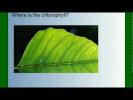 03.09.2012
Photosynthesis Part 1: An Overview
03.09.2012
Photosynthesis Part 1: An Overview
An overview of photosynthesis in preparation of more detailed look into the specific reactions involved in photosynthesis
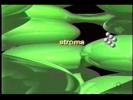 03.09.2012
Photosynthesis
03.09.2012
Photosynthesis
A summary of the photosynthesis process, including light or dependent reactions and dark, Calvin cycle, or independent reactions.
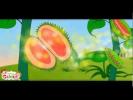 03.09.2012
Photosynthesis - Full Lesson - Kids-www.makemegenius.com -One of the best Indian education website
03.09.2012
Photosynthesis - Full Lesson - Kids-www.makemegenius.com -One of the best Indian education website
Visit www.makemegenius.com ,one of the best Indian education website for children. See children Science education videos for free
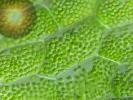 03.09.2012
Photosynthesis Video
03.09.2012
Photosynthesis Video
A video I had to make for my accelerated biology class. I made the first half and my partner made the next half.
 03.09.2012
Photosynthesis (Light Reactions)
03.09.2012
Photosynthesis (Light Reactions)
The NDSU Virtual Cell Animation Project presents 'Photosynthesis - The Light Reactions'. For more information please see http://vcell.ndsu.edu/animations
Photosynthesis is the means by which plants make use of chlorophyll and light to produce energy. This section covers the basic stages of the light reactions in the photosynthetic electron transport chain.
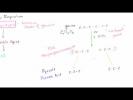 03.09.2012
Glycolysis
03.09.2012
Glycolysis
Overview of glycolysis
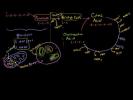 03.09.2012
Krebs / Citric Acid Cycle
03.09.2012
Krebs / Citric Acid Cycle
Overview of the Krebs or Citric Acid Cycle
 03.09.2012
Electron Transport Chain
03.09.2012
Electron Transport Chain
Overview of the Electron Transport Chain
 03.09.2012
Introduction to Cellular Respiration
03.09.2012
Introduction to Cellular Respiration
Introduction to cellular respiration, glycolysis, the Kreb's Cycle, and the electron transport chain
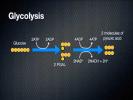 03.09.2012
Cellular Respiration - Energy in a Cell
03.09.2012
Cellular Respiration - Energy in a Cell
http://www.interactive-biology.com - In this lecture, I talk about Cellular respiration, which consists of Glycolysis, the Krebs Cycle and the Electron Transport Chain.
I deal with how Glucose is broken down and how ATP is made. Since energy is important for all living things, it's important to understand how ATP, the energy currency of the body, works.
http://www.interactive-biology.com
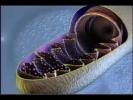 03.09.2012
How Cells Obtain Energy
03.09.2012
How Cells Obtain Energy
Cells and energy - Video for Hawthorn Academy Science Classes.
This video explains the processes associated with cellular energy processing.
Important vocabulary -
chloroplast, photosynthesis, mitochondrion, respiration, pgal (phosphoglyceraldehyde) ADP, ATP
 03.09.2012
Oxidative Phosphorylation
03.09.2012
Oxidative Phosphorylation
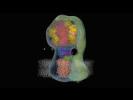 03.09.2012
F1 ATP synthase
03.09.2012
F1 ATP synthase
Credit: Dr. John E. Walker, Medical Research Council, Dunn Human Nutrition Unit, Cambridge, UK.
 03.09.2012
ATP Synthase Animation
03.09.2012
ATP Synthase Animation
ATP Synthase the Motor of Life by Nasif Nahle
When we talk about the macroscopic world, we define the term structure from an anatomical, histological and morphological viewpoint. However, we often ignore the fact that we have to make a qualitative jump in the progression from macrophysical systems to microphysical systems. When we investigate the system as a whole, we must not limit our knowledge simply to macrophysical parameters which can be measured, as length, distance, volume, etc., but to effective parameters which are further related with electric charges, electromagnetic fields, quantum energy and electrodynamic phenomena. We set in motion a picture of a macrophysical system, i.e. a plant. We can describe its height, its volume, its weight, the quantity of leaves it has, its color, etc.; however, as we move our observations towards smaller and smaller portions of the macroscopic structure, we arrive at a point at which the macrophysical qualities leap into another realm where the parameters with which we previously classified the living organism no longer have any utility. Of course, the transition is so subtle that many of us succumb to the idea that there is no more physical explanation to describe life. If we understand that there is no boundary, but rather a continuum which links every process in every living system with the Universe, we will not be so easily fooled by the illusion of a separation between the macrophysical world and the microphysical world.
 03.09.2012
ATP synthase - the world's tiniest motor
03.09.2012
ATP synthase - the world's tiniest motor
For more details visit: http://creation.com/creation-magazine-live-episode-38
ATP synthase is the world's tiniest motor. Spinning at up to 7000 RPM to manufacture ATP, the energy currency of the cell, it is a key requirement for life and it is powerful evidence against evolution.
Watch an animated video of ATP in action here: http://www.youtube.com/watch?v=W3KxU63gcF4
Main article:
From Creation magazine 31(4) ATP Synthase http://creation.com/atp-synthase
Related articles
• Design in living organisms (motors: ATP synthase) http://creation.com/design-in-living-organisms-motors-atp-synthase
• Fantastic voyage http://creation.com/fantastic-voyage
• DNA repair enzyme http://creation.com/DNA-repair-enzyme
• Notable evolutionists retreating from empiricism to arguments from anology http://creation.com/notable-evolutionists-retreating-from-empiricism-to-arguments-from-analogy
• Can evolution produce new organs or structures? http://creation.com/images/pdfs/tj/j19_2/j19_2_76-82.pdf
For more information on the creation/evolution issue visit http://creation.com
 03.09.2012
The ATP Synthase Enzyme
03.09.2012
The ATP Synthase Enzyme
http://creation.com
This animated sequence shows the ATP Synthase enzyme in operation. The animation is based on an incredible series of scientific discoveries. Only the colours show artistic licence.
ATP, or Adenosine Tri-Phosphate, is the energy currency of the cell. ATP is produced by a tiny molecular rotary motor, rotating at up to 7,000 rpm. These are so small that 100,000 would fit side-by-side in a millimetre. A current of protons drives the motor, unlike man-made electric motors, which use electrons.
This portion of the enzyme is where Adenosine Di-Phosphate is combined with a phosphate ion, in the presence of a catalyst to produce ATP which is then released, making way for the next cycle. A top view of the enzyme shows the sequential operation. Almost every bio-chemical process in your body requires ATP.
Such a nano-machine exhibits all the characteristics of super-intelligent design. ATP is vital for life and many of these motors were needed before the first living cell could exist. An evolutionary impossibility!
http://creation.com
Related Articles:
Design in living organisms (motors: ATP synthase): http://creation.com/design-in-living-organisms-motors-atp-synthase
ATP synthase: majestic molecular machine made by a mastermind: http://creation.com/atp-synthase
Is ATP synthase found in all life?: http://creation.com/atp-synthase-in-all-life
Related Products:
The Creation Answers Book - http://creation.com/store_redirect.php?sku=10-2-505
Creation Magazine subscription - http://creation.com/store_redirect.php?sku=90-3-003
What Darwin Couldn't Know tract - http://creation.com/store_redirect.php?sku=00-1-534
Exploring the World of Biology book - http://creation.com/store_redirect.php?sku=10-1-535
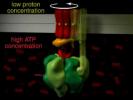 03.09.2012
ATP Synthase
03.09.2012
ATP Synthase
An amazing molecular machine, ATP synthase, can run use electrostatic potential energy stored in a proton gradient to generate ATP. Under different conditions, it can run in the opposite direction, using ATP to build a proton gradient. Created by Graham Johnson of fivth.com and Graham Johnson medical media www.grahamj.com, for Molecular Biology of the Cell, 4e by Alberts, Walter, et al, Gardland Publishers. ©2002
Please visit www.grahamj.com for examples of other molecular machines.
Update:
Glad to hear my APT synthase movie has helped so many people learn an otherwise complicate subject.
I put a lot of time into making this with Peter Walter (UCSF) and Mike Morales (Garland Publisher) back in 2001. http://www.youtube.com/user/garlandscience/featured
A new software project I work on with Ludovic Autin in Art Olson's lab, can make it a lot easier to make a movie like this, and we distribute it for free. Check out: http://epmv.scripps.edu if you want to try it out.
-Graham
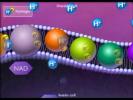 11.08.2012
Electron Transport Chain
11.08.2012
Electron Transport Chain
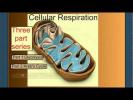 11.08.2012
Cellular Respiration Part 1: Introduction & Glycolysis
11.08.2012
Cellular Respiration Part 1: Introduction & Glycolysis
Details on Cellular Respiration. This video introduces the overall reaction, lists the stages and explains the details of glycolysis
 11.08.2012
Gradients (ATP Synthases)
11.08.2012
Gradients (ATP Synthases)
NDSU Virtual Cell Animations Project animation 'Gradients (ATP Synthase)'. For more information please see http://vcell.ndsu.edu/animations
Gradients are used to create energy that can power biological cyles. ATP synthase is powered by a hydrogen gradient, located in the mitochondria. This section covers the action of this specific gradient.
 15.11.2012
Комплекс Гольджи, животная клетка
15.11.2012
Комплекс Гольджи, животная клетка
Аппарат Гольджи (комплекс Гольджи) — мембранная структура эукариотической клетки, органелла, в основном предназначенная для выведения веществ, синтезированных в эндоплазматическом ретикулуме. Аппарат Гольджи был назван так в честь итальянского учёного Камилло Гольджи, впервые обнаружившего его в 1898 году.
 13.11.2012
Митоз
13.11.2012
Митоз
http://www.medvasya.ru
 13.11.2012
Яйцеклетка и сперматозоиды
13.11.2012
Яйцеклетка и сперматозоиды
Видеосъёмка яйцеклетки, сперматозоидов и процесса оплоотворения под микроскопом.
 13.11.2012
Двойное оплодотворение цветковых растений.flv
13.11.2012
Двойное оплодотворение цветковых растений.flv
Старый учебный фильм для ставки на http://fullbiology.ucoz.ru/
 13.11.2012
Мейоз.avi
13.11.2012
Мейоз.avi
Все видео из прогр."3D Человек" на http://fullbiology.ucoz.ru/
 13.11.2012
Мейоз
13.11.2012
Мейоз
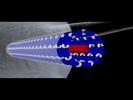 08.10.2012
Cytoskeleton Microtubules | Cell Biology
08.10.2012
Cytoskeleton Microtubules | Cell Biology
Segment from the program Cells: The Structure of Life. To purchase this program please visit http://www.greatpacificmedia.com/
 08.10.2012
Cell Structure Overview | Cell Biology
08.10.2012
Cell Structure Overview | Cell Biology
Segment from the program Cells: The Structure of Life. To purchase this program visit http://www.greatpacificmedia.com/
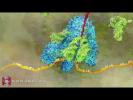 08.10.2012
mRNA Translation (Advanced)
08.10.2012
mRNA Translation (Advanced)
The job of the mRNA is to carry the gene's message from the DNA out of the nucleus to a ribosome for production of the particular protein that this gene codes for.
Originally created for DNA Interactive ( http://www.dnai.org ).
TRANSCRIPT: The job of this mRNA is to carry the genes message from the DNA out of the nuceus to a ribosome for production of the particular protein that this gene codes for. There can be several million ribosomes in a typical eukaryotic cell these complex catalytic machines use the mrna copy of the genetic information to assemble amino acid building blokes into the three dimensional proteins that are essential for life. Lets see how it works. The ribosome is composed of one large and one small sub-unit that assemble around the messenger RNA, which then passes through the ribosome like a computer tape. The amino acid building blocks (that's the small glowing red molecules) are carried into the ribosome attached to specific transfer RNAs. That's the larger green molecules also referred to as tRNA. The small sub-unit of the ribosome positions the mRNA so that it can be read in groups of three letters known as a codon. Each codon on the mRNA matches a corresponding anti-codon on the base of a transfer RNA molecule.The larger sub-unit of the ribosome removes each amino acid and join it onto the growing protein chain. As the mRNA is ratcheted through the ribosome, the mRNA sequence is translated into an amino acid sequence. There are three locations inside the ribosome, designated the A-site, the P-site and the E-site. The addition of each amino acid is a three step cycle: First, the tRNA enters the ribosome at the A-site and is tested for a codon/anti-codon match with the mRNA. Next, provided there is a correct match, the tRNA is shifted to the P-site and the amino acid it carries is added to the end of the amino acid chain. The mRNA is also ratcheted on three nucleotides or one codon. Thirdly, the spent tRNA is moved to the E-site and then ejected from the ribosome to be recycled. As the protein synthesis proceeds, the finished chain emerges from the ribosome. It folds up into a precise shape, determined by the exact order of amino acids. Thus the Central Dogma explains how the four letter DNA code is - quite literally - turned into flesh and blood.
 08.10.2012
phagocytose 1
08.10.2012
phagocytose 1
 08.10.2012
Powering the Cell: Mitochondria
08.10.2012
Powering the Cell: Mitochondria
Together Harvard University and XVIVO developed this 3D animation journey for Harvard's undergraduate Molecular and Cellular Biology students about the microscopic world of mitochondria. The animation highlights the creation of Adenosine Triphosphate (ATP) -- mobile molecules which store chemical energy derived from the breakdown of carbon-based food. ATP molecules act as a kind of currency, imparting chemical energy to power all the functional components of cellular activity. This piece is the second in a series of award winning animations XVIVO is creating for Harvard's educational website BioVisions at Harvard. The first program, Inner Life of the Cell, received international acclaim and can be seen both on our website and the BioVisions site.
http://www.xvivo.net
http://multimedia.mcb.harvard.edu/
 08.10.2012
Cells Cells - Parts of the Cell Rap
08.10.2012
Cells Cells - Parts of the Cell Rap
This rap was created for a 6th grade science classroom to teach about the different parts of a cell. With its catchy rhythm and rhymes, students of all learning styles and abilities will be able to learn about cells and their functions while having fun!
"Cells, Cells"
Original Rap by Ms. Quitmeyer
Today's the day were gonna learn about the cell
If I teach it okay, you'll know it very well
So listen up 6th graders-
-no room left for haters-
lets talk about the building blocks of life- cells that make us.
Chorus:
Cells, cells they're made of organelles
Try to pull a fast one, the cytoplasm gels
The nucleus takes over controllin' everything
The party don't stop 'till the membrane blocks the scene
Inside the vacuole we can float around for hours
Running round with chloroplasts, lovin' sunlight showers
Cells, cells, they're made of organelles
First things first, there's two different types-
animal and plant cells that make up all life.
The little things that make up microscopic cells,
The main structures- yeah, we call them organelles.
Now let's break it down and get some information-
How do cells work? It's a crazy combination!
-Chorus-
The cell membrane is the border patrol,
Who can cross over? The membrane lets 'em know
The gooey stuff inside, is called the cytoplasm
It holds the organelles- don't worry, plasm-has 'em!
In the middle of the cell you'll find the big brain,
The nucleus surrounded by nuclear membrane
Don't forget the vacuole filled up with water
It's a basic need for life when this rap keeps getting hotter!
-Chorus-
The mitchondria's something every cell needs,
Breaking down the food and releasin' energy.
There's a place inside the cell where chemicals are stored, the squiggly golgi bodies, releasin' even more.
Yo hangin' in the cell is endoplasmic reticulum, synthesizin' enzymes for respiration, and um...
If you still think that this rap is whack, remember ribosomes making proteins gettin' jacked!
-Chorus-
Lookin at the plant cell, weird and green
two more parts is all it takes you see?
Cell wall knows what's up when it comes to keepin' structure
Strong with cellulose, this cell can't get much tougher.
C-H- L-O- R-O -- Plast,
These little green machines are havin' a blast
Photosythenisizing- filled with chlorophyll
-they hit the cell club, runnin' up a high bill-
-Chorus-
 29.09.2012
Parts of a Plant Cell
29.09.2012
Parts of a Plant Cell
 29.09.2012
Parts of an Animal Cell
29.09.2012
Parts of an Animal Cell
 29.09.2012
Inside the Cell
29.09.2012
Inside the Cell
The microscopic internal structures within a human cell are shown in this 3D, computer-generated animation. It is an educational general survey of the main organelles that contribute to the cell's function.
The depiction has realistic textures, forms and text, all in a camera "fly-by".
http://nature.ca
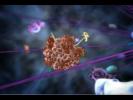 29.09.2012
Cell Journey deep Inside
29.09.2012
Cell Journey deep Inside
Journey inside the human cell
 29.09.2012
Journey Inside The Cell
29.09.2012
Journey Inside The Cell
http://www.discovery.org This animation shows how the digital information encoded in DNA directs protein synthesis inside the cell and provides a unique look at the evidence for intelligent design as described in Dr. Stephen C. Meyers book Signature in the Cell. For more information visit http://www.signatureinthecell.com
Facebook: http://www.facebook.com/discoverycsc
Twitter: http://twitter.com/#!/DiscoveryCSC
Website: http://www.discovery.org
 29.09.2012
The Stages of Mitosis
29.09.2012
The Stages of Mitosis
Stages of Mitosis, a promotional piece, begins with a fly-through of cells preparing to undergo mitosis (cell division).
Upon entering a cell we are introduced to various organelles of the inner cell and the key events involved in mitosis.
Cell division involves 7 key stages resulting in the splitting of the nucleus, and ultimately, cell division.
http://www.hybridmedicalanimation.com
 29.09.2012
Golgi apparatus
29.09.2012
Golgi apparatus
This animation shows the dynamics of the golgi apparatus, a subcellular organelle involved in protein export. Proteins being processed for export are shuttled in vesicles between the membranous layers.
 29.09.2012
Golgi Apparatus - an animatic
29.09.2012
Golgi Apparatus - an animatic
Golgi Apparatus - the function is to process and package the macromolecules that are synthesized by the cell for processing of proteins for secretion.
Music by: Hans Zimmer
 29.09.2012
cell nucleus
29.09.2012
cell nucleus
Lost?
Start here - http://www.youtube.com/user/himrdo
Videos inside videos, pictures, and music belongs to their respective owner, and were obtain to use in these presentations for the purpose of educating the viewers. The creativity, uploads, time, and voice belongs to me of course :)
 29.09.2012
Nucleus, Nucleolus, and Nuclear Envelope
29.09.2012
Nucleus, Nucleolus, and Nuclear Envelope
Tried exporting at least 20 different ways. Last ditch effort if this makes it. I don't like macs anymore Mr. Fyfe.
 29.09.2012
Загадки живой клетки. Иммунитет.
29.09.2012
Загадки живой клетки. Иммунитет.
В наших клетках целая Вселенная, живущая по законам Того, Кто ее создал. Незнание законов не освобождает от ответственности. Узнайте больше об иммунитете и вашем организме.
Skype: deminairina
 29.09.2012
Сперма под темнопольным микроскопом.
29.09.2012
Сперма под темнопольным микроскопом.
Сперма человека под темнопольным микроскопом, увеличенная в 1500 тысяч раз.
 29.09.2012
ВЕЛИКИЙ ЗАМЫСЕЛ В СПЕРМАТОЗОИДЕ
29.09.2012
ВЕЛИКИЙ ЗАМЫСЕЛ В СПЕРМАТОЗОИДЕ
Сперматозоид это клетка, главное назначение которой заключается в передаче генетических данных мужчины в яйцеклетку женского организма. Под микроскопом сперматозоид можно увидеть, что эта клетка представляет собой устройство идеально подходящее для доставки такого "груза".
 29.09.2012
Загадки живой клетки
29.09.2012
Загадки живой клетки
Загадки живой клетки
 13.09.2012
Портреты классиков-цитологов
13.09.2012
Портреты классиков-цитологов
 08.09.2012
Introduction to Cells
08.09.2012
Introduction to Cells
This is a newly revised 3 minute HD dramatic video choreographed to powerful music, which introduces the viewer to the wonder and miracle of cells. It is designed as a motivational "trailer" to be shown by Biology, Biochemistry and Life Science teachers in middle and high school and college as a visual "Introduction" to this amazing microscopic world.
I wish to thank all of the quality video and music producers whose postings enabled me to create this video for educational use.
Please rate this video and comment. If you like it, please post links to it on your media websites. The more teachers and students who can enjoy the inspiration of the video to excite kids about our cells, the better.
To best enjoy this video, turn up your speakers. The music is very stirring.
Subscribe to my channel for other video trailers in Biology, Earth Science, Astronomy and other topics. I will be releasing new ones periodically. I can customize this video to add your name or school name at the end credits, for a very modest fee. If interested, email me at "inquiry@gregs-educational.info"
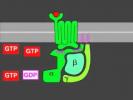 08.09.2012
G-protein signaling
08.09.2012
G-protein signaling
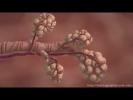 08.09.2012
A Real Example of Cell Communication
08.09.2012
A Real Example of Cell Communication
This 3-D movie is a close look at some of the cell signaling and responses that take place throughout the body during the fight-or- flight response. The dynamic ways in which cells communicate with each other through molecular signals is depicted without focusing on anatomy, vocabulary or chemistry.
For a detailed play-by-play of what is happening in the movie and a higher-resolution version, visit:
http://learn.genetics.utah.edu/content/begin/cells/cellcom/
For supplemental classroom materials for teachers about cells visit: http://teach.genetics.utah.edu/content/begin/cells/
---------
Question from the comments:
I was wondering how cells know where they are in our bodies. Like how does a cell know if its supposed to be a cell for the surface of our skin, a brain cell, a muscle cell, etc? What makes a new cell thats growing the middle of a muscle know that it's supposed to be a muscle cell, rather than a dif type?
Answer:
Great question! It has everything to do with the signals cells receive from other cells and what stage of development you are talking about - embryo or human.
This piece on our website may help: http://learn.genetics.utah.edu/content/tech/stemcells/scintro/
In this activity you can send signals to adult stem cells to differentiate them into different types of cells: http://learn.genetics.utah.edu/content/tech/stemcells/sctypes/
This page helps explain what it means for a cell to receive a signal: http://learn.genetics.utah.edu/content/begin/cells/insidestory/
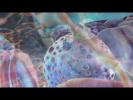 08.09.2012
animated 3d cells in the body
08.09.2012
animated 3d cells in the body
cutting edge medical animation of cells
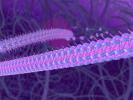 08.09.2012
TourOfAnAnimalCell
08.09.2012
TourOfAnAnimalCell
An animated and narrated tour of the animal cell.
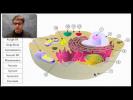 08.09.2012
A Tour of the Cell
08.09.2012
A Tour of the Cell
Paul Andersen takes you on a tour of the cell. He starts by explaining the difference between prokaryotic and eukaryotic cells. He also explains why cells are small but not infinitely small. He also explains how the organelles work together in a similar fashion
 08.09.2012
Mitosis
08.09.2012
Mitosis
NDSU VCell Production's animation "Mitosis". For more information please see http://vcell.ndsu.edu/animations.
Mitosis is the process by which the chromosomes in the nucleus of a cell are divided into into two new nuclei. This animation illustrates how the stages of mitosis progress and eventually lead to the formation of two new cells.
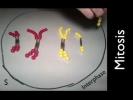 08.09.2012
Mitosis and Meiosis Simulation
08.09.2012
Mitosis and Meiosis Simulation
Mr. Andersen uses chromosome beads to simulate both mitosis and meiosis. A brief discussion of gamete formation is also included.
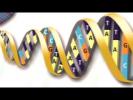 08.09.2012
Programming of Life
08.09.2012
Programming of Life
An exploration of microbiology, information science, and the origin of life.
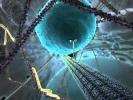 08.09.2012
Harvard Cell Animation.mp4
08.09.2012
Harvard Cell Animation.mp4
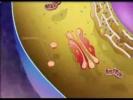 08.09.2012
Cell Organelles And Their Function (BOTH 3D AND MICROSCOPIC VIEWS )
08.09.2012
Cell Organelles And Their Function (BOTH 3D AND MICROSCOPIC VIEWS )
A Video Showing Different Cell Organelles
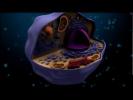 08.09.2012
Cell Structure and Function - Advanced Biotechnology Podcast 1.2
08.09.2012
Cell Structure and Function - Advanced Biotechnology Podcast 1.2
Advanced Biotechnology Podcast 1.2 Presented by the Texas Education Agency. In this lesson, we explore the basic concepts of molecular biology, and compare and contrast the structure and function of prokaryotic and eukaryotic cells.
 08.09.2012
How Cells Obtain Energy
08.09.2012
How Cells Obtain Energy
Cells and energy - Video for Hawthorn Academy Science Classes.
This video explains the processes associated with cellular energy processing.
Important vocabulary -
chloroplast, photosynthesis, mitochondrion, respiration, pgal (phosphoglyceraldehyde) ADP, ATP
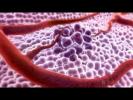 08.09.2012
3D Medical Animation - What is Cancer?
08.09.2012
3D Medical Animation - What is Cancer?
"What is Cancer?" is a 3D Animation which depicts the growth of a tumor.
(music by: Bjorn Lynne - Blissful Moments, courtesy of www.Shockwave-Sound.com)
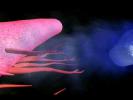 08.09.2012
Cancer Biology
08.09.2012
Cancer Biology
Supported By:
Emory College.
 08.09.2012
Cancer Growth Animation
08.09.2012
Cancer Growth Animation
This video demonstrates how cancer growth happens in human body.
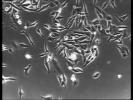 08.09.2012
Normal vs Cancer Cells
08.09.2012
Normal vs Cancer Cells
NCI B-roll: Black and white footage of normal and cancer cells. This segment depicts cell growth, with the first segment displaying normal cells, the second segment (1:20) displaying cancer cells and the third segment (2:38) showing both normal and cancer cells. Differences in ruffling (changes in the cell membrane) and movement are emphasized.This video has no audio.
 08.09.2012
Cancer Cells vs. Healthy Cells
08.09.2012
Cancer Cells vs. Healthy Cells
Learn about the differences between cancerous cells and healthy blood cells. For more information about blood cancers, visit ASH's patient resources webpage http://hematology.org/Patients/.
This animation was featured in the documentary film "Blood Detectives." To learn more about the film, visit http://www.hematology.org/Publications/Blood-Detectives/5246.aspx
 08.09.2012
Amazing Microscopic HD Video! Paramecium Feeding!!
08.09.2012
Amazing Microscopic HD Video! Paramecium Feeding!!
The oral groove, gullet and the filling and detachment of the food vacuole are clearly visable in this video
Необходимо редактирование? Выделите фрагмент текста, нажмите сочетание клавиш Ctrl+Enter и оставьте свои комментарии.